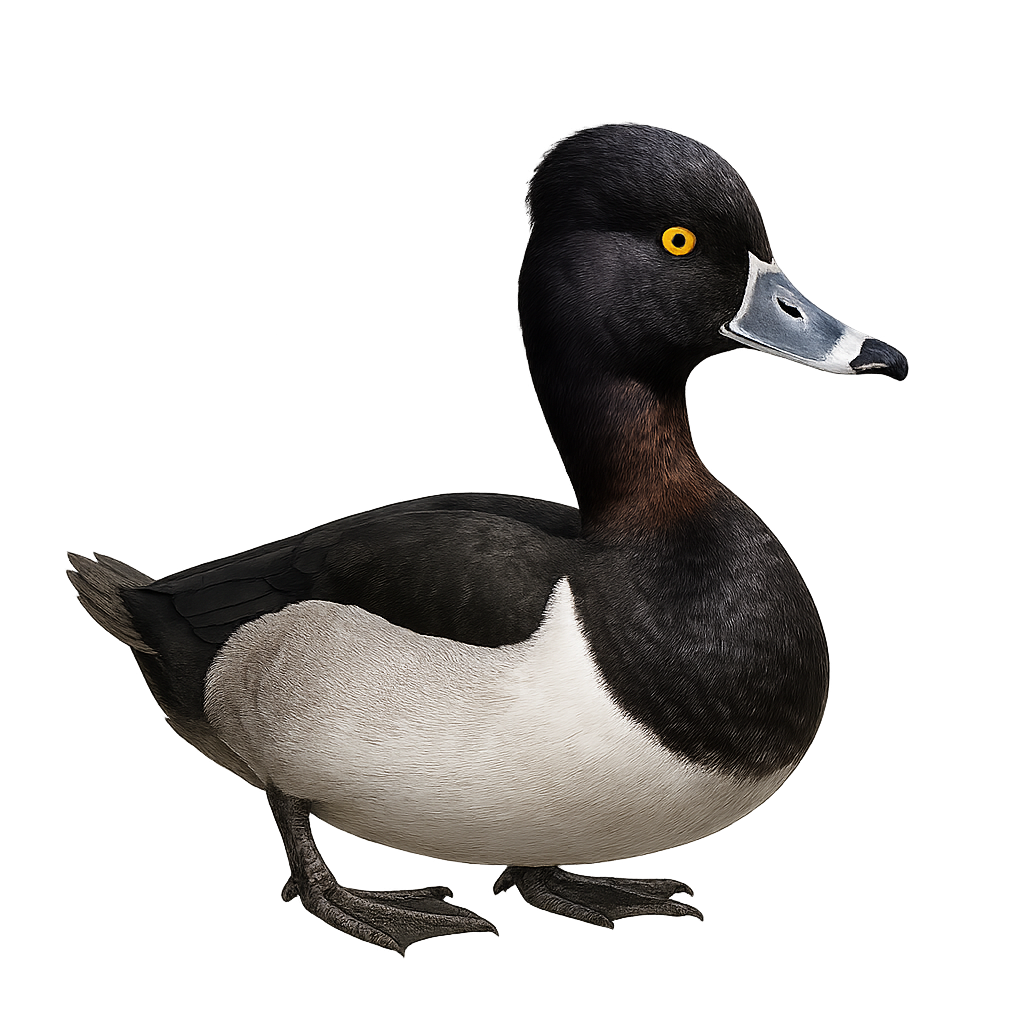Your wildlife photography guide.
Explore the ring-necked duck in detail, study its behavior, prepare your shots.
Where to observe and photograph the ring-necked duck in the wild
Learn where and when to spot the ring-necked duck in the wild, how to identify the species based on distinctive features, and what natural environments it inhabits. The WildlifePhotographer app offers tailored photography tips that reflect the ring-necked duck’s behavior, helping you capture better wildlife images. Explore the full species profile for key information including description, habitat, active periods, and approach techniques.
Ring-necked Duck
Scientific name: Aythya collaris

IUCN Status: Least Concern
Family: ANATIDAE
Group: Birds
Sensitivity to human approach: Suspicious
Minimum approach distance: 10 m
Courtship display: May to July
Incubation: 25-27 jours
Hatchings: May to August
Habitat:
Lakes, ponds, marshes
Activity period :
Primarily active during the day, with peak activity in the morning and late afternoon.
Identification and description:
The Ring-necked Duck, Aythya collaris, is a medium-sized diving duck known for its distinctive neck ring. Males display a striking black and gray plumage with a blue-gray bill marked by a white band, while females are browner with a white eye ring. They inhabit lakes and ponds across North America, feeding on aquatic plants, seeds, and invertebrates. Their flight is swift and direct, often in small flocks. Although generally wary, they can become accustomed to human presence in protected areas. Their population is stable, but habitat loss remains a potential threat.
Recommended lens:
400mm – adjust based on distance, desired framing (portrait or habitat), and approach conditions.
Photography tips:
To photograph the Ring-necked Duck, choose calm mornings when the light is soft. Use a telephoto lens of at least 400mm to capture details without disturbing the bird. Wait near the water bodies they frequent and be ready to adjust your position for the best angle. A tripod can be helpful to stabilize your camera, especially for long-distance shots. Be discreet and avoid sudden movements to prevent scaring them away.
The WildlifePhotographer App is coming soon!
Be the first to explore the best nature spots, track rutting seasons, log your observations, and observe more wildlife.
Already 1 432 wildlife lovers subscribed worldwide

